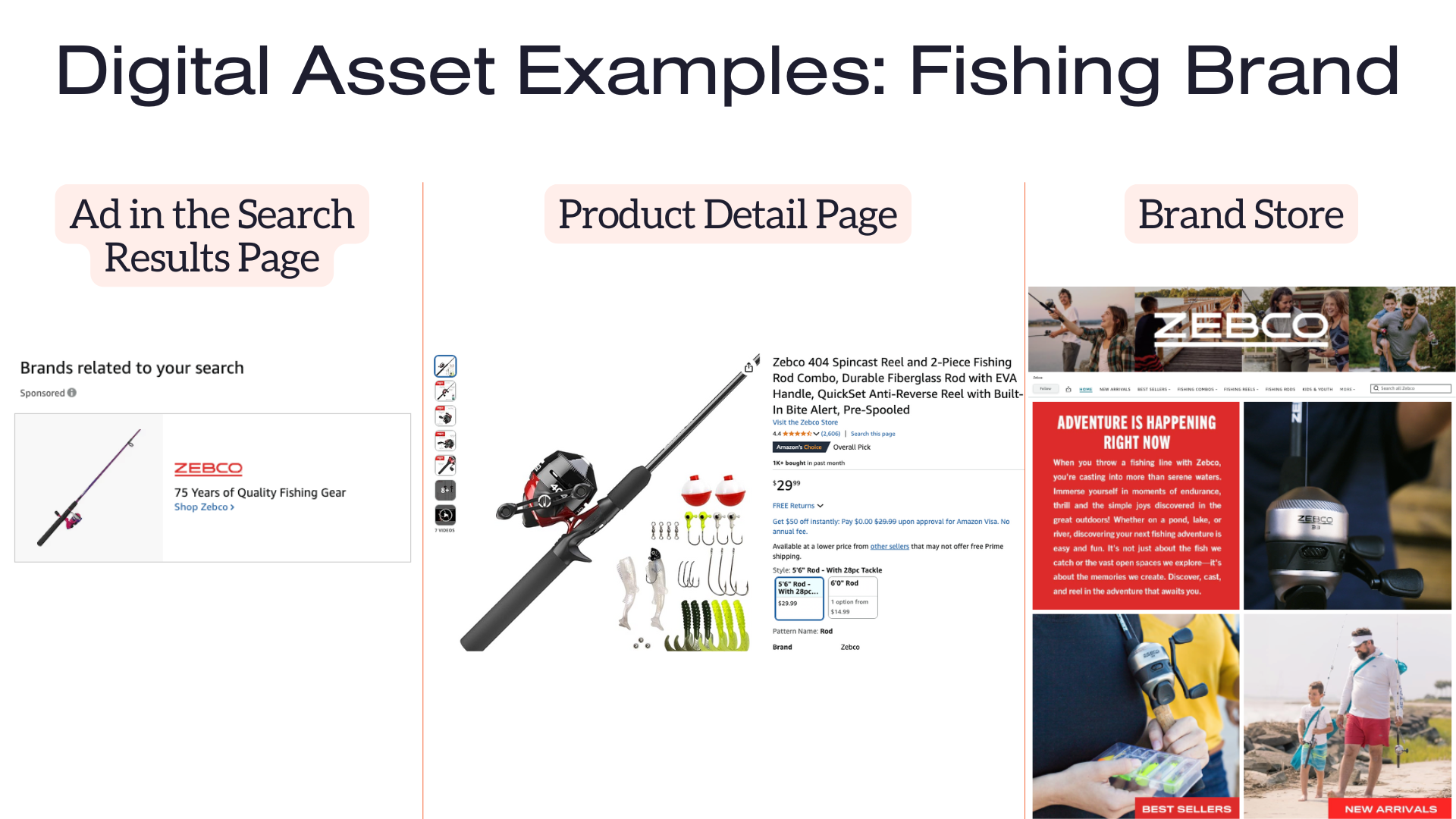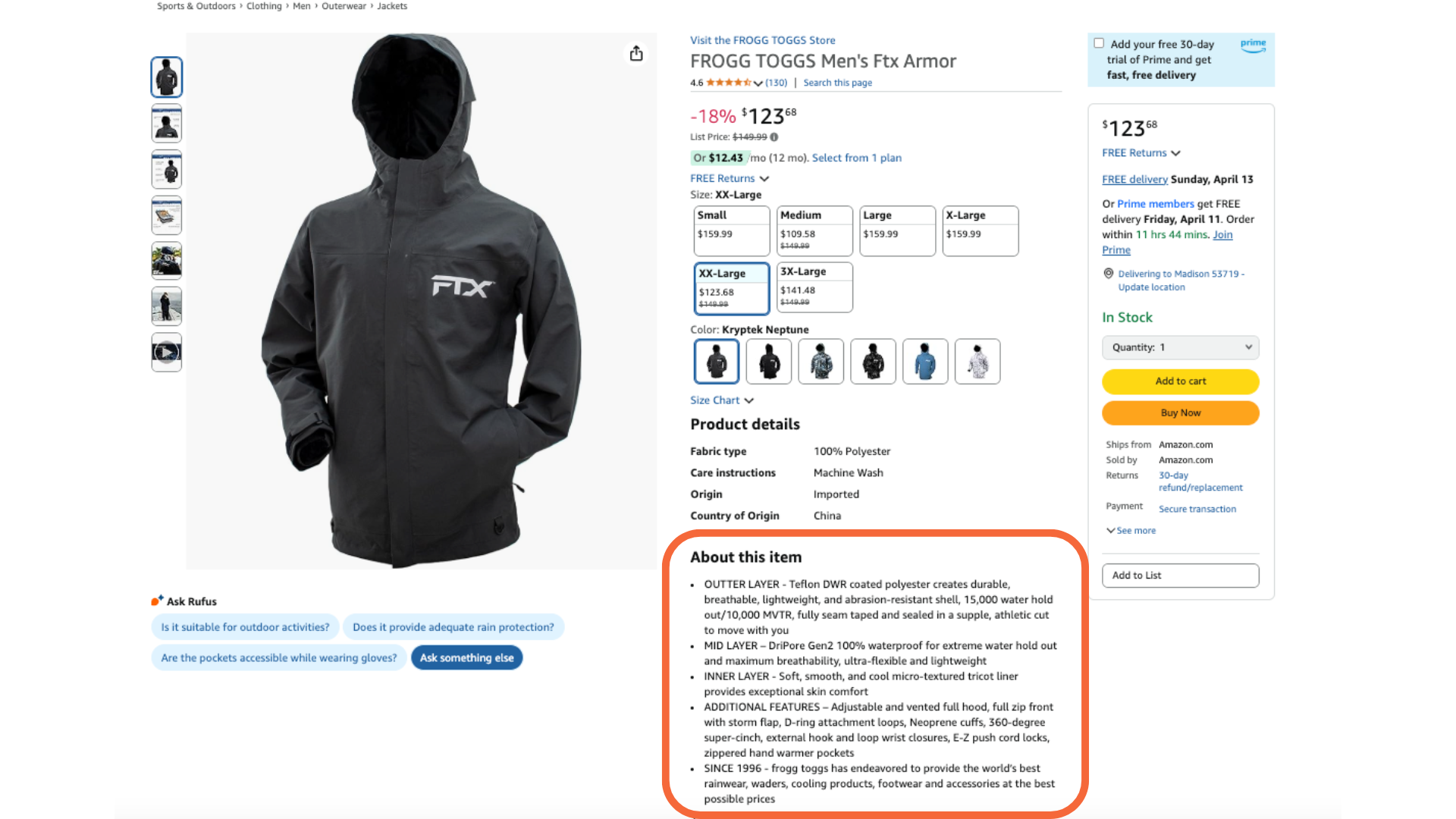Article
Don’t Let Outdated Digital Assets Hurt Your Brand’s Sales Potential
In the dynamic and ever-changing world of ecommerce, your digital assets are a potential customer’s first impression of your brand. These digital images, videos, words, and content represents who you are and the products you sell online. But here’s the thing: digital brand assets aren’t a “set it and forget it” deal. To truly maximize success, you’ve got to keep them fresh, relevant, and consistent. Outdated or irrelevant assets will cause confusion, lead to inconsistencies across marketing channels, and ultimately negatively affect customer experience. Which is all bad news.
To better understand why this is so important, let’s first clarify all that falls under the umbrella of “digital assets.”
What Are Digital Assets, Anyway?
Think of digital assets as any piece of content that your brand owns and uses online. Digital assets include a wide range of creative materials, like written content (product descriptions and blog posts), social media content, websites, and audio files, with a subset category of visual assets like images, videos, logos, and even typography. Essentially, digital assets are anything that you use to promote your brand, connect with your audience, and drive those all-important conversions.
When we narrow our focus to ecommerce, these digital assets take on very specific roles. They’re not only the images, video, and content you see on a product detail page, but across the entire shopping experience—think Brand Stores, ads, banners, sponsored content, and other marketing initiatives that influence purchasing decisions.
Why Does Updating Digital Assets Matter?
Now that we have a good idea of what the term “digital assets” refers to, we can dive into why their upkeep is so critical. Let’s break it down:
Brand Consistency: Your Visual and Verbal Identity
Imagine walking into a store where the signage is faded, the displays are disorganized, and the staff seems indifferent. That’s the kind of brand impression outdated visual assets, a subset of digital assets, can give your customers. Maintaining brand consistency through regular updates ensures a unified visual and verbal identity across all of your brand’s online platforms. This builds brand recognition, fosters trust, and creates a seamless customer experience.
Visibility and Ranking: Getting Found Online
In crowded online marketplaces like Amazon, visibility is everything. And SEO is an important key to achieving that visibility. By regularly updating your digital assets with fresh visuals, optimized keywords, and current product information, you improve your brand’s SEO. This, in turn, helps search engines favor your content and listings, ultimately increasing your reach to potential customers.
Sales and Conversions: Turning Browsers into Buyers
Your digital assets can be viewed as your brand’s sales team. High-quality, up-to-date images, compelling descriptions, and engaging content can make all the difference in whether a customer clicks “add to cart” or moves on to a competitor’s product. Updating assets keep your online catalog looking its best, driving customer engagement, and boosting those crucial sales and conversion rates.
Competitiveness and Relevance: Staying Ahead of the Curve
The world of ecommerce moves fast. Trends come and go, customer expectations grow, and competitors are constantly innovating. Refreshing your visual assets keeps your brand agile, current with evolving consumer preferences, and remaining competitive. It shows your customers that you’re “happening now”, relevant, and committed to providing them with the best possible shopping and product experience.
In short, updating your ecommerce visual assets directly impacts brand trust, visibility, sales, and competitiveness. With this in mind, it is efficient to focus on key asset types. Let’s examine the essentials.
The Essentials: Digital Assets You Need to Keep Current
To keep your ecommerce engine running well, focus on maintaining key digital assets that will help you stand out from competitors.
Product Images: Your Visual Showcase
Your product images are often the first thing a customer sees, with the main image visible on the search results page. Make them count! Use high-resolution, clear, and varied images that accurately represent your product. Show different angles, close-ups, and—whenever possible—focus on lifestyle shots to give customers a complete picture. For major marketplaces, ensure a pure white background for the main/hero image, where the product is occupying a significant portion of the frame (at least 85%). Aim for images with sufficient pixel dimensions to enable zoom functionality, which is especially crucial when taking high-definition mobile screens into consideration (around 70% of online purchases are made via mobile devices).
Product Titles: Your First Point of Contact
Product titles are critical for both clarity and searchability. Use concise, descriptive language and incorporate relevant keywords that customers are likely to use when searching for your product.
Product Descriptions: Tell Your Product’s Story
Don’t just list features – tell a story. Craft detailed, accurate, and engaging product descriptions that highlight the benefits and unique selling points of your products. Compelling descriptions inform customers, answer their questions, and entice them to buy.
Enhanced Content: Go the Extra Mile
Take advantage of the multitude of enhanced content options today’s marketplaces provide to create a richer, more immersive product shopping experience. For example, Amazon provides sellers with Brand Stories, Brand Stores, and A+ Content to provide visually engaging and in-depth product information to customers. Utilizing these asset types helps drive loyal engagement, brand trust, and conversions.
Final Considerations
Maintaining effective ecommerce digital assets is not a destination but a journey of continuous improvement down a long, winding road. Embrace these final considerations to achieve sustained success:
Monitor and Analyze: Data-Driven Decisions
Track the performance of your digital assets and analyze data to identify areas where your brand appearance can be improved. Monitor platform-specific analytics and leverage external tools to further analyze and optimize your content. Consider using A/B testing or split tests with various assets to see which versions of your content performs best.
Adapt to Platform Requirements: Play by the Rules
Each ecommerce platform has its own specific requirements and guidelines. And, to make matters more challenging, they are constantly in a state of change, always adapting to emerging trends and technologies. Adhere to these platform-specific rules for image sizes, formats, content restrictions, and other factors to ensure your visual assets are displayed correctly and perform optimally. Set a cadence schedule to review these guidelines and requirements often as what may have been true last month might not be true tomorrow. Refer to the official seller help pages for the platforms you sell on for specific details or reach out to our team for assistance.
Value Trumps Volume
Think strategic over saturated and focus on creating high-quality, valuable content that resonates with your target audience. Prioritize consistency and strive for continuous improvement.
Get Help with Digital Assets
To explore more tools for keyword research, image optimization, and visual asset management, we encourage you to reach out to our team of creative strategists at Brandwoven. We would be happy to audit your existing digital asset strategy and share recommendations to further optimize performance.
Discuss Assets with a Marketplace Expert
Explore Our Impact







